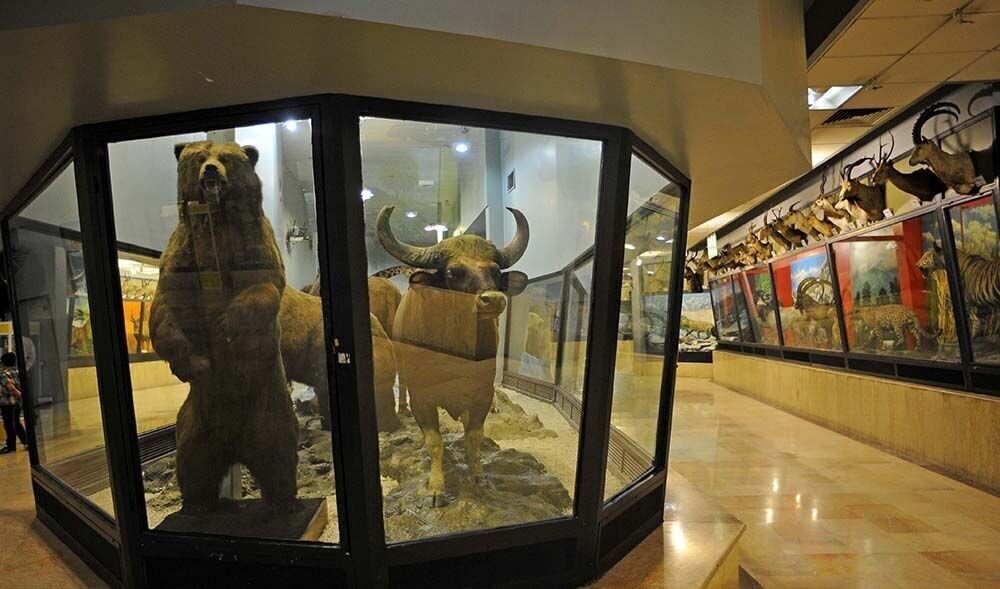Iran’s remarkable biodiversity museum

TEHRAN – The richest and most important biodiversity museum of Iran has been set up in the Department of Environment (DOE), which exhibits extinct native species such as Persian lion and Caspian tiger, as well as rare species of Asiatic cheetah, mugger crocodile, bustard, grouse, and Asian black bear.
In the museum of the natural history of Iran, out of about 90,000 identified specimens in the world, there are more than 5,000 species of animals, plants, ancient and museums, while entry is not open to the public.
The museum includes several sections, including a genetic bank that includes samples of genes from Iranian and foreign species for study, a herbarium collection, an animal taxidermy collection, and a geological museum.
Providing research opportunities in the fields of animal, plant, and geological species, the museum allows researchers and scientists to study special and rare species of Iran and other species.
This collection, which is the first-panel exhibition (collection of horns and skulls) in Iran, has been working for a long time, since 2006 until the efforts of Iranian researchers, which has been completed in August 2020.
This panel includes a variety of deer, chinkara, antelopes, mouflon, wild goat, and a large number of specimens of foreign animals, especially from Russia, Siberia, and Africa.
In the taxidermy collection, the samples are generally collected after an animal’s death, part of this collection has been donated.
There are the world’s eight top specimens in the museum that are unique and there is no second specimen of them, including urials, hartebeest, dik-dik (the world's smallest antelopes), and Persian fallow deer.
The world’s biodiversity section includes different species of mammal and reptile from the deserts of Africa to the North Pole. The Persian Gulf collection also includes a combination of aquatic and terrestrial specimens with a mock-up of the coastal landscape of the region, the Persian Gulf submarine tunnel also includes fish species, the starfish of the Persian Gulf. In the Caspian Sea collection, there is a rare Caspian seal and a variety of Caspian fish.
Other valuable items include the world’s most diverse and remarkable butterflies, insect display cases, Asian elephant skeletons, Iranian stone and minerals, mollusk showcases including large shells, especially from Southeast Asia, samples of old fossilized plants of the country, and a showcase of invertebrates including corals, cephalopods, echinoderms, bivalves, and ammonites (a type of mollusk) found in Iran.
Five ecoregions, rich biodiversity
Each region is defined by its characteristics that play a significant role in a land's biodiversity and richness, based on which, Iran shares five ecological zones with specific flora from the lowest to the highest parts.
The great difference between the two latitudes of the north and south of the country and the existence of different plains, altitudes, and climates have given a very diverse view to the vast land so that a variety of vegetation and plant species are grown across it. Here, five ecological regions of Iran are briefly introduced below.
The Hyrcanian ecological zone covers the green belt, the southern margin of the Caspian Sea, and the northern profile of the Alborz mountain range. The forested areas of the region stretch to 2.4 million hectares covering Astara in Gilan province to Glidaghi in Golestan province.
The area of forests in the Iran-Turani ecological region, which covers most of the central plateau of Iran, is 4,666,941 hectares. Based on topographic and altitude conditions, this region is divided into two mountainous regions with a cold climate and a desert with a hot and dry climate.
The forests of this region, which are among the semi-humid forests of the country, are located in the province of East Azarbaijan and northwest of Ardebil province, which covers 174,838 hectares. Arasbaran forests have been protected by UNESCO since 1976 as one of the biosphere reserves due to their rare and unique plant species and rich biodiversity.
Some sources date the Zagros oak forests to 5,500 years. The creation and expansion of these forests are due to rainfall raised by the Mediterranean system and the Black Sea, which extends from the Sardasht area of West Azarbaijan to Firoozabad city of Fars province covering an area of 5,440,494 hectares.
The forests of the Persian Gulf-Omani ecological region include part of the southwest and all southern coasts, covering 2,039,963 hectares. Due to ecological differences, the main vegetation is divided into two territories of the Persian Gulf and the Sea of Oman.
FB/MG
Leave a Comment